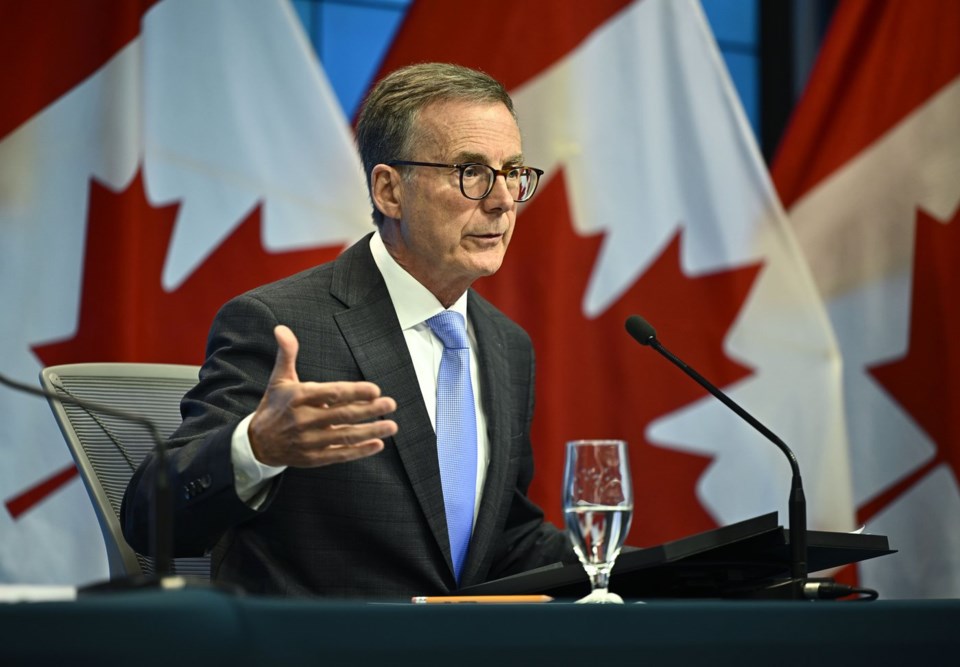OTTAWA — Canada’s annual inflation rate fell to 2.5 per cent last month, matching economists' forecasts and solidifying expectations for a third consecutive interest rate cut in September.
Tuesday’s consumer price index report says prices for travel tours, passenger vehicles and electricity helped drive the headline figure lower.
Meanwhile, shelter costs are still the main driver of inflation as Canadians face significantly higher rents and mortgage payments.
The federal agency noted, however, that shelter price growth slowed last month to 5.7 per cent year-over-year, down from 6.2 per cent in June.
Inflation has remained below three per cent since January and has steadily trended lower, highlighting the significant progress made in the fight against high inflation.
"There’s more to go in terms of reaching price stability as Canadians feel the pinch and pull back on spending," wrote Andrew DiCapua, senior economist at the Canadian Chamber of Commerce.
"But we think the Bank of Canada will continue their path of interest rate cuts and move again in September, prioritizing economic growth as inflation moderates."
Improvement in global supply chains and the effect of high interest rates have helped cool price growth across the economy.
Grocery prices, which at one point were growing at a double-digit annual rate, are now rising at a much more modest pace. Last month, grocery prices were up 2.1 per cent from a year ago.
Prices for many goods, such as clothing and footwear, have outright fallen compared with a year ago.
And the housing market has remained relatively muted, despite fears earlier this year that interest rate cuts could spur a flurry of activity.
However, some price pressures persist, particularly in services-producing sectors.
Prices for services were up 4.4 per cent from a year ago, a trend that economists say reflects high wage growth.
Nevertheless, with the backdrop of slowing price growth overall, forecasters are widely expecting the Bank of Canada to continue cutting interest rates at back-to-back meetings.
Governor Tiff Macklem has signalled that the central bank is increasingly concerned about the risk of keeping interest rates too high for too long.
At the last interest rate announcement, Macklem said the governing council decided to lower its policy rate, in part to help the economy pick up speed again.
Its key interest rate now stands at 4.5 per cent.
The central bank is scheduled to hold its next interest rate announcement on Sept. 4.
In addition to the latest inflation figures, the central bank will have second quarter gross domestic product data to consider at the end of the month.
While most forecasters expect the central bank to cut its key rate by a quarter-percentage point in September, RBC economist Claire Fan said a weaker-than-expected GDP print could prompt the central bank to cut by a half-percentage point instead.
"Should it be that economic conditions were to deteriorate faster than they were anticipating, I think it's fully reasonable to think that they could (cut) at a faster pace," Fan said.
According to its latest forecasts, the central bank expects the economy grew at an annualized rate of 1.5 per cent between April and June.
The Canadian Press
